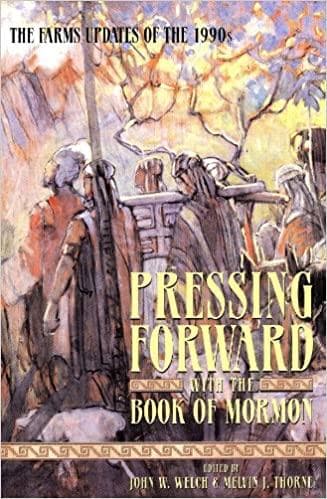Book
69 Chapters

“He called me by name, and said unto me . . . that God had a work for me to do; and that my name . . . should be both good and evil spoken of among all people.” (JS—H 1:33)
The character and claims of Joseph Smith are fundamental to the claims of the Church he founded. Knowing this, critics of the Prophet have contended for more than a century and a half that he and his family were the kind of people from whom nobody would want to buy a used car, much less receive a plan of salvation.
The original anti-Mormon book, Eber D. Howe’s 1834 Mormonism Unvailed [sic], featured affidavits gathered from former Smith neighbors by the excommunicated and bitter Philastus Hurlbut describing the Prophet’s family as, among many other derogatory things, “lazy” and “indolent.”1 Joseph Capron, for example, declared that the Smiths’ “great object appeared to be, to live without work.”2 “It was a mystery to their neighbors,” said David Stafford, “how they got their living.”3
Over the past several decades, Mormon scholars have subjected these affidavits and other such alleged “reminiscences” to sharp criticism.4 Nevertheless, these early documents have remained an anti-Mormon treasure trove to which generations of critics have turned and returned for years.
However, in a path-breaking article just recently published, Donald L. Enders, a senior curator at the Museum of Church History and Art in Salt Lake City, presents hard evidence that deals a serious blow to the credibility of the Hurlbut-Howe affidavits.5Working from land and tax records, farm account books and related correspondence, soil surveys, horticultural studies, surveys of historic buildings, archaeological reports, and interviews with agricultural historians and other specialists—sources not generally used by scholars of Mormon origins—Enders concludes that, on questions of testable fact, the affidavits cannot be trusted.
The Smiths’ farming techniques, it seems, were virtually a textbook illustration of the best recommendations of the day, showing them to have been, by contemporary standards, intelligent, skilled, and responsible people. And they were very hard working. To create their farm, for instance, the Smiths moved many tons of rock and cut down about six thousand trees, a large percentage of which were one hundred feet or more in height and from four to six feet in diameter. Then they fenced their property, which required cutting at least six or seven thousand ten-foot rails. They did an enormous amount of work before they were able even to begin actual daily farming.
Furthermore, in order to pay for their farm, the Smiths were obliged to hire themselves out as day laborers. Throughout the surrounding area, they dug and rocked up wells and cisterns, mowed, harvested, made cider and barrels and chairs and brooms and baskets, taught school, dug for salt, worked as carpenters and domestics, built stone walls and fireplaces, flailed grain, cut and sold cordwood, carted, washed clothes, sold garden produce, painted chairs and oil-cloth coverings, butchered, dug coal, and hauled stone. And, along the way, they produced between one thousand and seven thousand pounds of maple sugar annually. “Laziness” and “indolence” are difficult to detect in the Smith family.
What resulted from the Smiths’ hard work? The 1830 tax records for Manchester Township appraise the family’s holdings at the average level per acre for farms in the vicinity. Of the ten farms owned by the Staffords, Stoddards, Chases, and Caprons—residents of the neighborhood who affixed their signatures prominently to affidavits denigrating the Prophet’s family—only one was assessed as more valuable per acre than the Smiths’. The others received lower appraisals—and, in some cases, significantlylower ones.
The conclusion to be drawn? If the Hurlbut-Howe affidavits cannot be trusted on matters that can be quantified and tested, there seems little reason to trust their judgments in the less tangible matter of character. Clearly, they reflect religious hostility and perhaps envy from their less successful neighbors. As the Prophet’s brother William expressed it, “We never knew we were bad folks until Joseph told his vision. We were considered respectable till then, but at once people began to circulate falsehoods and stories in a wonderful way.”6
Research by Daniel C. Peterson and Donald L. Enders, originally published in Insights (September 1993): 2.
1. Eber D. Howe, Mormonism Unvailed (Painesville, Ohio: By the author, 1834), 249; see 231–69.
2. Ibid., 260.
3. Ibid., 249.
4. See, for example, Richard Lloyd Anderson, “Joseph Smith’s New York Reputation Reappraised,” BYU Studies 10 (spring 1970): 283–314.
5. See “The Joseph Smith, Sr., Family: Farmers of the Genesee,” in Joseph Smith: The Prophet, the Man, ed. Susan Easton Black and Charles D. Tate Jr. (Provo, Utah: BYU Religious Studies Center, 1993), 213–25.
6. Deseret Evening News, 20 January 1894, p. 11; compare the verdict of Richard L. Bushman, Joseph Smith and the Beginnings of Mormonism (Urbana: University of Illinois Press, 1984), 190.
Book
69 Chapters
Items in the BMC Archive are made publicly available for non-commercial, private use. Inclusion within the BMC Archive does not imply endorsement. Items do not represent the official views of The Church of Jesus Christ of Latter-day Saints or of Book of Mormon Central.